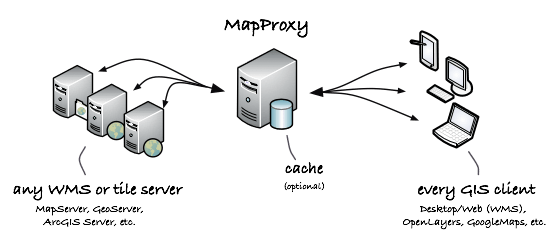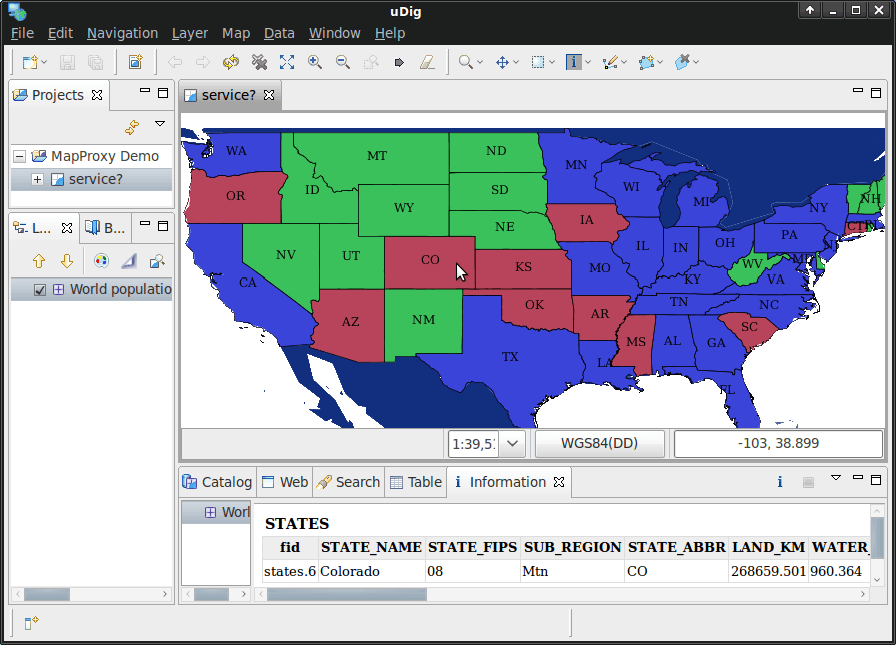
MapProxy is the swiss army knife for all WMS and tile services. It caches, accelerates and transforms data from existing map services and serves any desktop or web GIS client.

MapProxy is not only a tile cache solution, but also offers many new and innovative features like full support for WMS clients.
MapProxy has flexible deployment options and you can integrate it in Apache for example. But you can also start MapProxy as a standalone service, which is the best option to get started.
To start MapProxy as a standalone service click on Geospatial ‣ Web Services ‣ MapProxy ‣ Start MapProxy.
The MapProxy demo page contains a rudimentary WMS and tile client for each configured layer. You can’t select the projection for WMS layers for example, but it is enough to quickly verify that your installation works.
You can open the demo in Firefox: http://localhost:8011/demo
You can add MapProxy in any WMS Desktop GIS like uDig, QGIS or gvSIG. The service URL is: http://localhost:8011/service?
The MapProxy example configuration contains a few layers that use different map engines and map data. See below for more details about each layer.

Single WMS layer with data from two cascaded sources and FeatureInformation from one source.
You can use mapproxy-util to create new configuration templates and to start a test server.
To create a new configuration:
mapproxy-util create -t base-config ~/mapproxy
To start the test server on port 8011 with the created configuration:
mapproxy-util serve-develop ~/mapproxy/mapproxy.yaml -b 0.0.0.0:8011
You can now visit the demo page at http://127.0.0.1:8011/demo/. MapProxy will automatically reload if you change your configuration file.